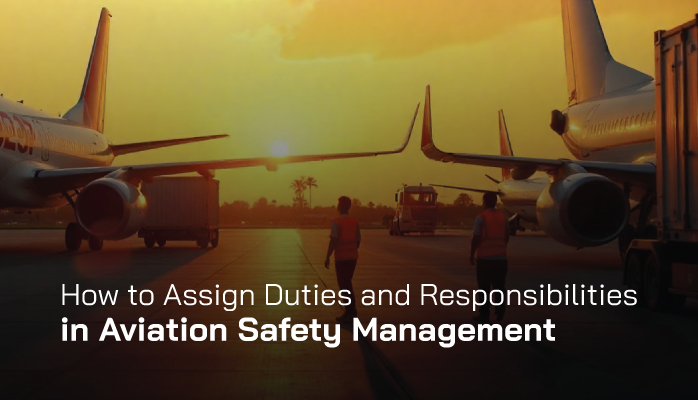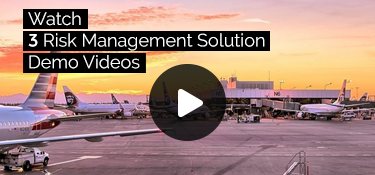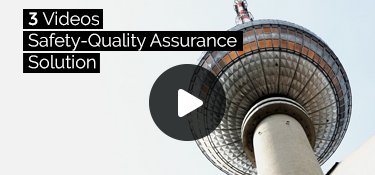Purpose of Duties and Responsibilities in Aviation SMS

Duties and responsibilities in aviation SMS outline what each role will be accountable for and its core tasks. Each role will have unique tasks and accountabilities. You assign duties and responsibilities to an employee by assigning him/her a role. Duties and responsibilities allow your organization to:
- Manage company expectations of employees;
- Ensure employees understand what is expected of them; and
- Control access to information based on roles.
Assigning duties and responsibilities to roles is something you do at the beginning of your SMS, in phase 1 of SMS implementation. Duties and responsibilities should be:
- Mapped out in your org chart;
- Included in your safety policy;
- Described in detail by listing each role’s responsibility/authority; and
- Assigned to individuals in your company.
Difference Between Duties and Responsibilities
Duties and responsibilities mean different things:
- Duties: short and long-term tasks that are critical to a role; and
- Responsibilities: aspects of the SMS that a role is answerable for.
For example, a department head role may have duties related to:
- Creating and managing corrective actions; and
- Performing root cause analysis on reported issues.
The department head may have responsibilities for:
- Ensuring issues are closed on time; and
- Fixing deficient controls.
Naturally, these are simple examples, in a real safety program the list of duties and responsibilities for a role would be extensively longer.
Related Aviation Duties and Responsibilities Articles
- Distinguishing Between Responsibility, Authority, and Accountability in Your Aviation SMS
- How to Monitor Aviation SMS Responsiveness Using Safety Charts
- Your Risk Management Attitude, Risk Response, and Emotional Intelligence
Steps for How to Assign Duties and Responsibilities
Assigning duties and responsibilities requires that you do some initial work and development of your SMS. Before you assign roles, you should:
- Create roles for your SMS;
- Develop your incident management process;
- Develop your SRM process; and
- Develop your SA process.
Once you have documented these processes, you can assign roles to employees. In doing so, you assign employees roles and responsibilities.
Step 1 – Create Safety Management Roles

To create roles in aviation safety programs, you need to understand clearly what different responsibilities are needed to facilitate your SMS. Additionally, you need to consider:
- The size of your company;
- What resources your SMS is using (SMS software, spreadsheets, etc.);
- Support of front line employees; and
- Existing processes.
When creating your roles, some good tips are:
- Make a list of all safety responsibilities;
- Start out with the essential roles;
- List of responsibilities for each role;
- See which important roles would be good inclusions for your existing processes;
- List responsibilities for each important role; and
- Then see which responsibilities in your organization are not filled by the roles you just documented.
Make sure you document these roles in your safety policy and safety org chart.
Step 2 – Have Complete Incident Management Process
Your incident management process is probably the part of your SMS that safety managers and department heads will interact with most. It almost goes without saying that you need to understand what your process is in order to understand:
- What duties are needed;
- What role is needed to fulfill those duties; and
- Scope of responsibilities for managing reported issues.
This process may be written out in a step-by-step flow chart. This makes understanding necessary duties and responsibilities very easy.
Step 3 – Have Complete Safety Risk Management Process
Your safety risk management (SRM) process is the core of your documentation efforts. Through your SRM process, you will develop your operational risk profile. This is a mission-critical process for having a thorough knowledge of your SMS and maintaining compliance with oversight authorities.
Various tasks needed for SRM processes include (but are not limited to):
- Documenting each risk control;
- Documenting all identified hazards;
- Performing risk assessment on hazards;
- Risk assessing each hazard; and
- Reviewing hazards on an annual basis.
Documenting these tasks requires an extensive amount of work that should be tasked to different roles, such as:
- Subject-matter experts;
- Helpers; and
- Top managers.
Step 4 – Develop Safety Assurance Process Tasks
Finally, like your SRM process, you need to develop the various aspects of your safety assurance process. SA includes duties like:
- Reviewing effectiveness of risk controls;
- Inspecting the SMS;
- Tracking key performance indicators; and
- Tracking safety performance metrics.
Once again, these tasks should be assigned to different roles.
Last updated October 2025.






